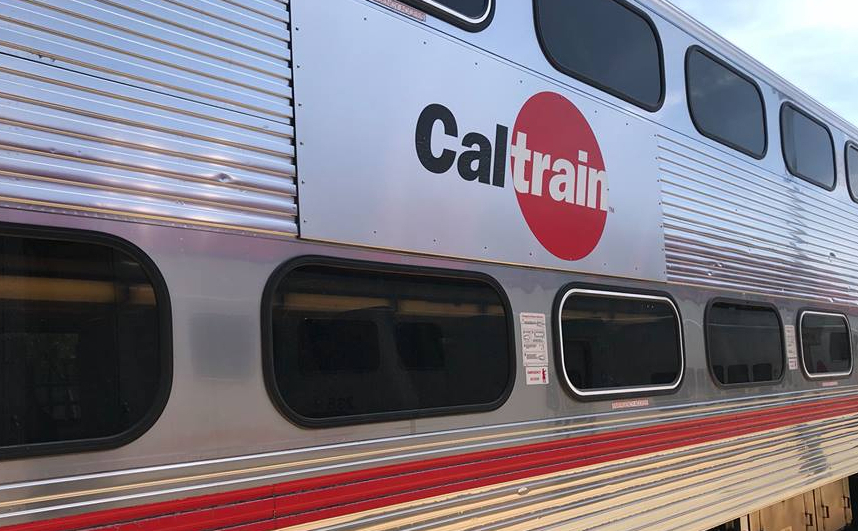Over the next 20 years, Caltrain aims to double the number of trains operating during peak hours and realize end-to-end service from Gilroy to the Salesforce Transit Center in San Francisco.
It’s part of the Caltrain Business Plan’s 2040 Service Vision, approved last week by the Caltrain Board of Directors, which seeks to evolve the system into one that provides fast, frequent service “every day, all day,” and to nearly triple ridership from the current 65,000 daily riders to 180,000, according to the transit agency.
Currently, Caltrain operates five trains per hour in each direction during peak commute times. That isn’t sustainable as ridership has more than doubled in the last 15 years and with highway traffic increasingly worsening, according to Caltrain.
With electrification of the system underway (and set for completion in 2022), the Peninsula Corridor Joint Powers Board, a collaboration of transit agencies in San Francisco, San Mateo and Santa Clara counties, set out to develop a 20-year plan to incrementally modernize and expand the system.
As part of the longterm plan, Caltrain aims to vastly increase service by running a minimum of eight trains per direction, per hour, during peak hours, or one every 7.5 minutes. Four trains would be local and the other four express. High speed rail trains would share the rail corridor. The plan also includes increased off-peak and weekend services, and envisions end-to-end service from the Salesforce Transit Center in San Francisco to Gilroy, with four trains per hour, per direction between Blossom Hill and Tamien Stations, and two trains per hour, per direction between Gilroy and Blossom Hill Stations.
Connections are also envisioned for the potential of renewed rail service across the Dumbarton Bridge and the rebuilding of Diridon Station in San Jose.
The plans will require billions of dollars in infrastructure investments, including a new high-performance signal system, station modifications to lengthen platforms, improved maintenance and storage facilities, grade separations of the corridor and “a series of short, 4-track stations that allow express trains to overtake locals,” according to Caltrain.
Operating costs will vastly increase. Currently, Caltrain’s total annual operating costs are $135 million, of which $97 million is covered by fares. Under the 2040 plan, operating costs are expected to grow to $370 million, of which $266 million is projected to be covered by fares.
New and dedicated funding sources will be needed to sustain the long-term vision, which the agency says, if successful, could eliminate up to 825,000 car trips daily, according to Caltrain.
Read more about the long range plans in a Climate Magazine report here. Also, read more about the plan at the Caltrain site here: www.






